Distant cousin and scientist extraordinaire, Edmund Gunter
Distant cousin Edmund Gunter (b. 1581, Hertfordshire; d. 10 December 1626, London) has been a thorn in my side for some time now. While searching early newspapers and other publications for any information related to the Gunter family, I keep seeing hundreds of ads posted for “Gunter’s quadrants” or “Gunter’s scales”, especially in the 18th century. This slows down my search considerably and cousin Edmund is to blame.
Edmund Gunter was an early British mathematician and astronomer, and preacher, of the 16th century. He was appointed professor of astronomy in Gresham College, London, in 1619 and held that position until his death in 1626. He focused primarily on the application of mathematics to real world problems. Equally, he published works in English – among the first scientists to do so – in an effort to make knowledge available to a wider number of fellow citizens. Such was his renown among learned people of the day that he was given a brief mention in John Aubrey’s Brief Lives, a celebrity “Who’s who” of the era first published in 1650 in a collection of manuscripts by English antiquary, natural philosopher and writer, John Aubrey.
Edmund Gunter (1581—1626)
** Mr. Edmund Gunter1:—for his birth, etc, see in Antiq. Oxon. A. Wood.
Captain Ralph Greatorex, mathematical instrument maker in London, sayd that he [Gunter] was the first that brought mathematicall instruments to perfections. His booke of the quadrant, sector, and crosse-staffe did open men’s understandings and made young men in love with that studie. Before, the mathematical sciences were lock’t up in the Greeke and Latin tongues and so lay untoucht, kept safe in some libraries. After Mr. Gunter published his booke, these sciences sprang up amain, more and more to that height it is at now (1690).
When he was a student at Christ Church, it fell to his lott to preach the Passion sermon, which some old divines that I knew did hear, but they sayd that ’twas sayd of him then in the University that our Saviour never suffered so much since his passion as in that sermon, it was such a lamentable one—
Non omnia possumus omnes. (We cannot all do all things.)
The world is much beholding to him for what he hath donne well.
Gunter is originally a Brecknockshire family, of Tregunter. They came thither under the conduct of Sir Bernard Newmarch, when he made the conquest of that county (Camden),— ‘Aubrey, Gunter, Waldbeof, Harvard, Pichard’ (which is falsely express’d in all Mr. Camden’s bookes, scil. Prichard, which is nonsense).
1Aubrey gives in trick the coat:—’sable, 3 gauntlets argent’; and adds ‘quaere if these gauntlets are dextre or sinistre?’
Among his lasting inventions are the aforementioned Gunter’s quadrant and Gunter’s scale (pictured below) as well as Gunter’s rig and Gunter’s chain.
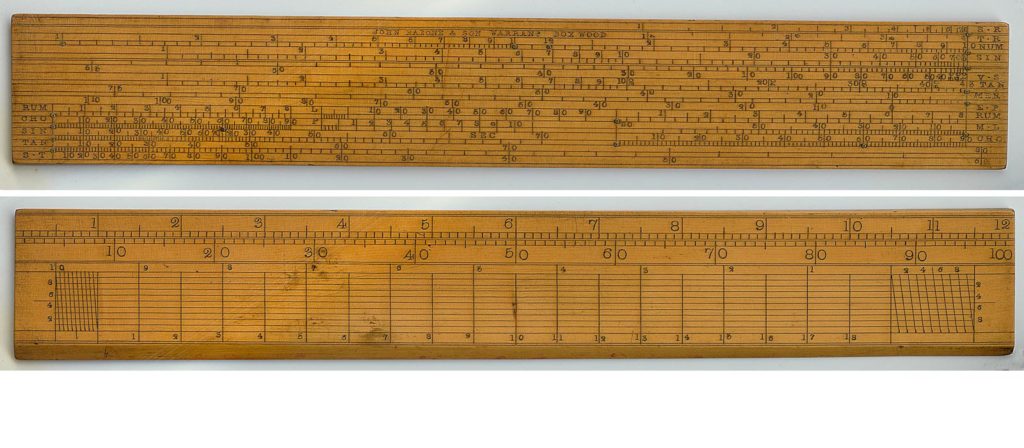
A 19th century scale manufactured by John Rabone & Son, Birmingham, UK.
[photo by owner, Nathan Zeldes of www.nzeldes.com]
Gunter’s scale is rather curious and I would love to own one. It is a type of rule, or line gauge, a rectangular piece of thin wood about two feet long and with several different scales scribed into it. I will not dive into the details of it but Gunter’s scale allowed mathematicians, engineers, carpenters and the like to quickly perform multiplications and calculate trigonometric functions. Prior to its invention, these complex tasks required the use of looking up various subparts of calculations in published tables, such as John Napier’s table of logarithms published in 1614. So useful was this device that it was standard issue to navigators aboard British ships well into the 19th century. It is also the precursor to the more popular slide rule, invented just a few years later when Cambridge mathematician William Oughtred joined two Gunter’s scales together to allow for faster usage without the separate dividers necessary to read the tick marks on a single scale. On modern slide rules, the logarithm scale is known as Gunter’s line.
In my genealogy searches I frequently encounter ads such as the one picture here, from the Tuesday, October 21, 1783 edition of the Pennsylvania Packet. The ad starts off with the announcement, “Just imported from England, by Rose & Dickins,” and includes a long list of goods including Gunter’s scale.
There are dozens upon dozens of these ads appearing in US newspapers throughout the 18th and 19th centuries. Handly little gadgets they must have been.
Gunter’s quadrant was a navigational aid that was primarily used to find the hour of the day. Having kept timely logs of a ship’s speed (using the ropes and knots technique) it was crucial to know the times these values were recorded so a navigator could determine how far a ship had travelled. It was a simplified version of the more complicated Arabic astrolabe. Edmund Gunter described its construction in a 1623 publication, De Sectore & Radio though he never built one himself. A few examples exist from ca. 1657 by the known instrument maker Henry Sutton and one nearly perfect quadrant was discovered in St. Joseph, Missouri, in 1940, and an original 400-page instruction manual found in nearby Bernard, Missouri a few weeks later. The book was an original edition, dating to 1630.
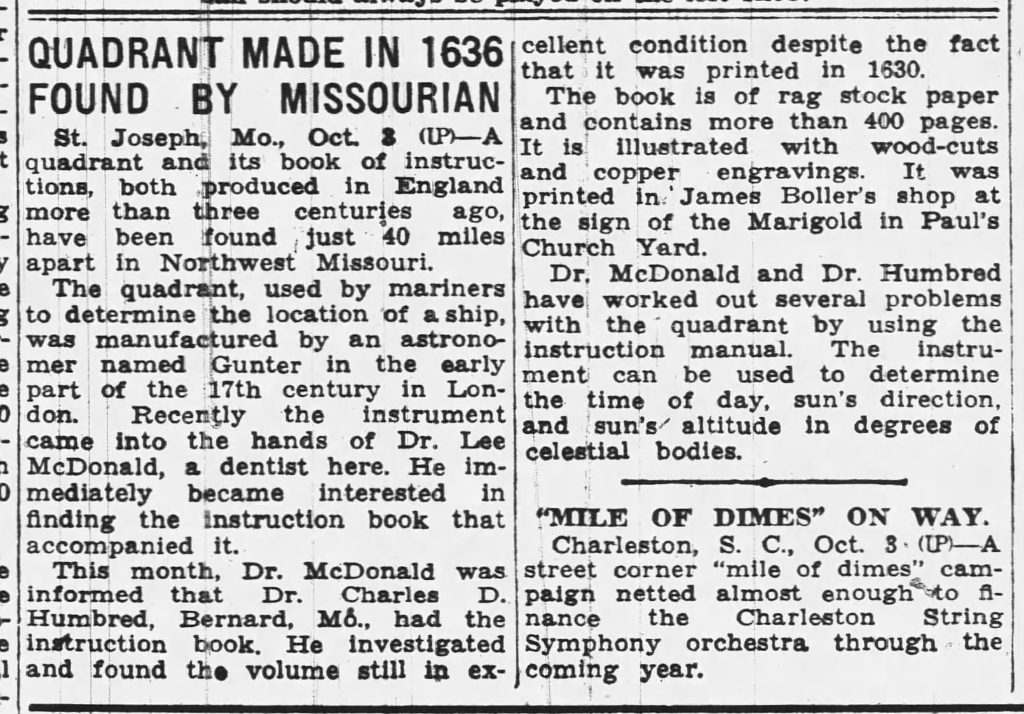
A 3 October 1940 article in Columbus, Indiana’s “The Republic” about the discover in Missouri of an original Gunter’s quadrant with 400-page manual.
Now perhaps it is merely coincidental but I found it odd that such a rare Gunter’s quadrant was found just a few miles south of Gentry County, Missouri—source of the modern Gunter family line in Missouri, Kansas, and other western states.
Edmund Gunter’s works and inventions were so wide spread and in common usage for so long that the phrase “according to Gunter” was still common in the lexicon at the turn of the last century, as presented by this blurb in the Red Lodge Picket (Red Lodge, Montana). Friday, 6 June 1902 edition.
You can read a a short but excellent biography of Edmund Gunter here.
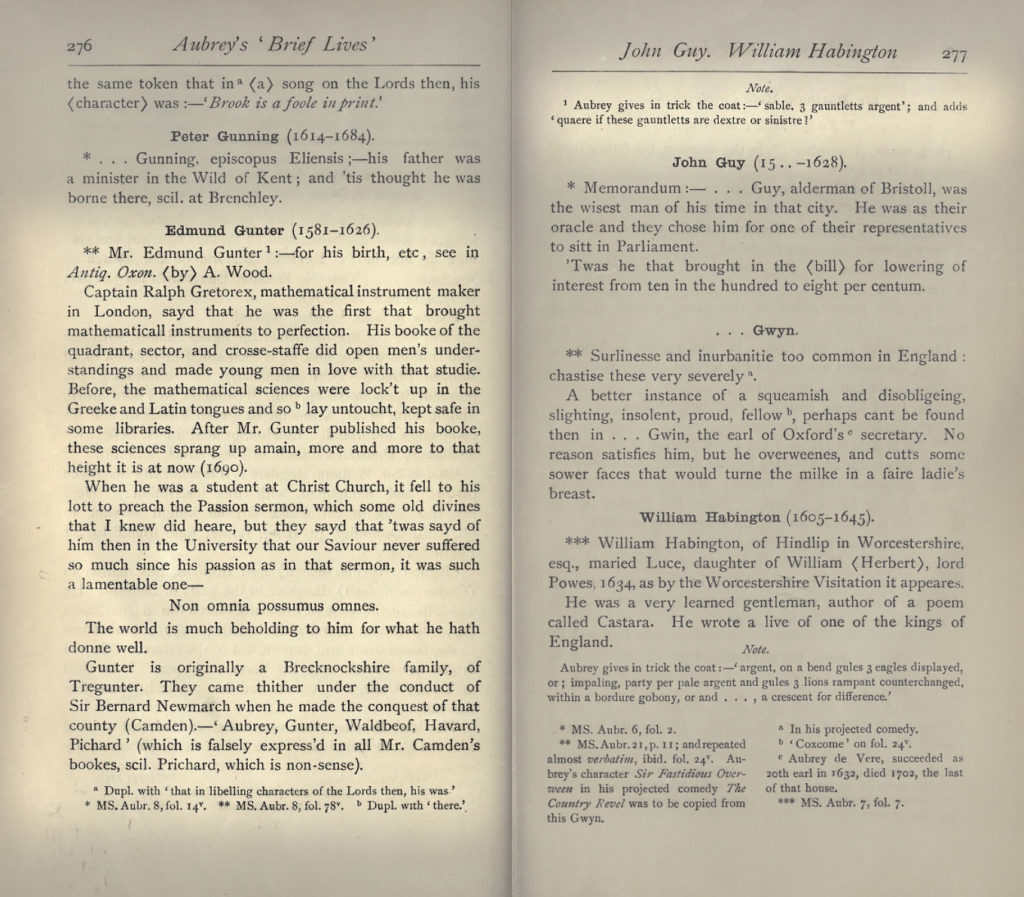

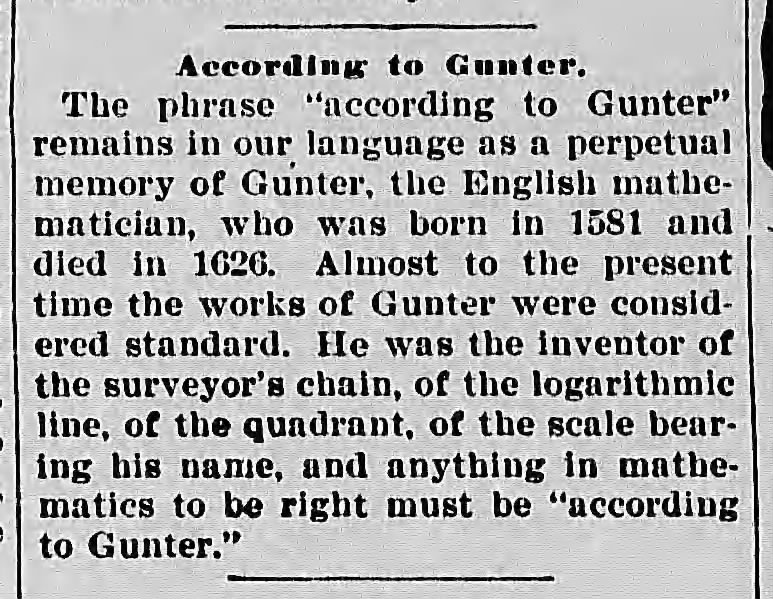
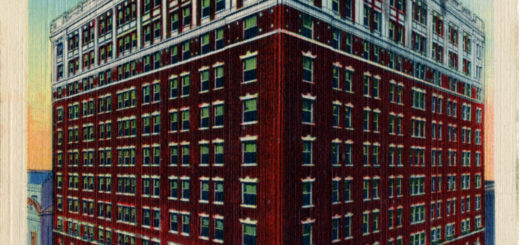
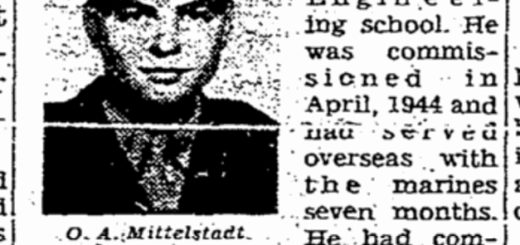
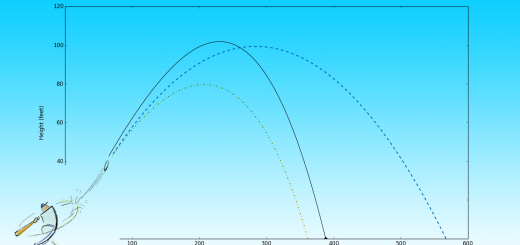
Recent Comments